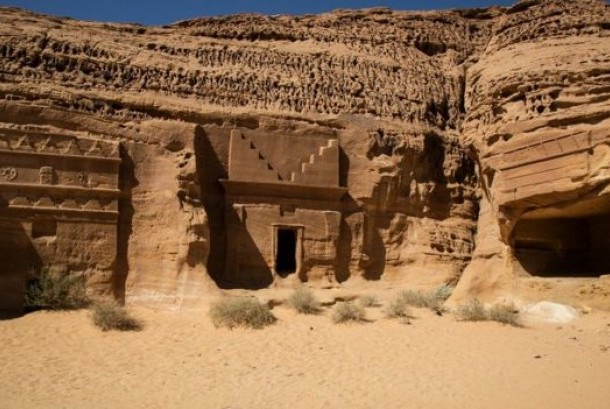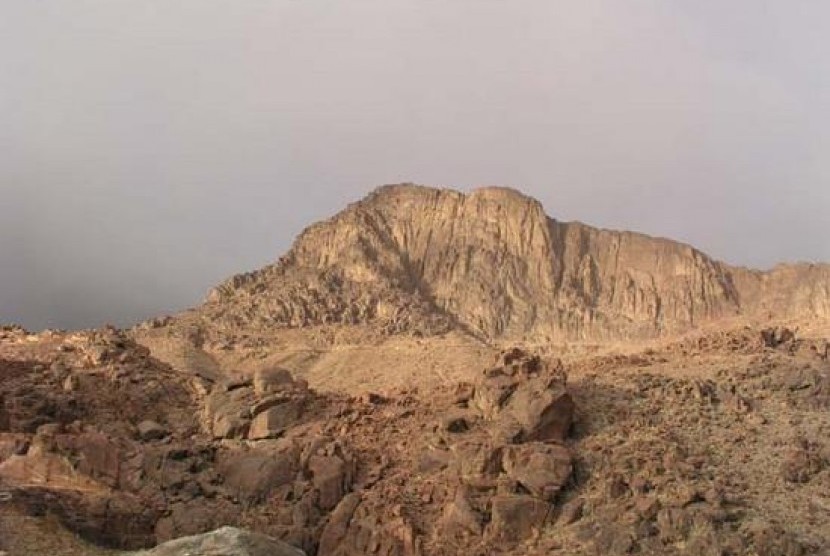REPUBLIKA.CO.ID, JAKARTA --The mountain is a creature of God which is also often referred to by Allah SWT in the Quran. The mountain was made by God as a stake in the earth, as Allah Subhanahu wa Ta'ala said in the letter of An Naba verse 7,
وَّالْجِبَالَ اَوْتَادًاۖ
and mountains as pegs?
Tafsir An-Naba' Verse 7
And have We not set up the mountains as pegs so that the earth does not shake, so that men may live quietly upon them?
Second, God made the mountains a peg to strengthen the earth, so that it would not sway because of the shocks that were beneath them.
Some of the mountains mentioned in the Quran among them,
First, Mount Sinai
A number of interpreters believe that Mount Thursina as mentioned in Surah Attin is in the region of Egypt located on Mount Munajah, on the side of Mount Moses. This location is associated with the existence of the Sinai Peninsula. This opinion is supported by Sayyid Quthb in his interpretation of the Fi Zhilal Qur'an. According to Quthb, Thursina or Sinai was the mountain where Moses was called to dialogue with Allah.
In this version, many believe that the area of Egypt is the place mentioned as Thursina. Because, in this area, there is a statue of an ox. This event is attributed to the deeds of Samiri, a traitorous follower of the Prophet Moses.
Second, Mount Judiy
In the book of Tafsir Ilmi Knowing the Science Verses in the Quran, the Qur'an does not specifically describe the location of the settlement of the Prophet Noah.
However, some scholars believe they lived in the area today known as Kufah and Iraq. Quran Surat Hud verse 44, only mentions the landing site of the Prophet Noah's ark, which is on Mount Judi.
And the word. “O earth! Swallow your water and cease, O heavens (rain).” And the waters were sorted out and the commandments were fulfilled, and the ship was anchored on Mount Judi, and it was said perish of the wrongdoers.
Maulana Yusuf Ali in his Tafsir of the Quran states that Mount Judi is located in an area encompassing the district of Bohtan in Turkey near the borders of present-day Turkey, Iraq and Syria. The highlands of the great Ararat mountain range dominate the region.
Third, Mount Tsamud People
According to archaeologists, the construction on the mountain as seen in the place was not the work of ordinary people because for the moment alone, it was necessary to use powerful machines to do it. Al Ula is also known as Madain Saleh (House of Tsamud).

In Islam, this place is also known as Madain Saleh, which is home to the Tsamud (Tsamud people) or the Prophet Saleh as known for their miraculous power and skill in making mountain carvings and constructions that we can still see today. It is said that this area was once very fertile and green, which had grains and ample crops every year. But this abundant natural wealth made the rich among the Tsamuds arrogant and cruel and loved to torture and kill the poor.
The Tsamud and Nabataeans who settled in Madain Saleh, is a historic site with 132 rooms and graves. It is located about 440 kilomters (km) north of Medina. The remains that can still be seen here are carvings and sculptures on the walls, towers, as well as a number of aqueducts and water tubs.


